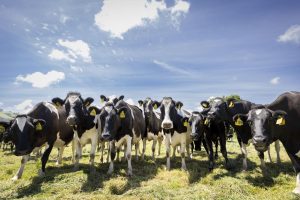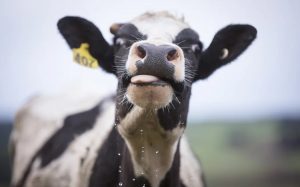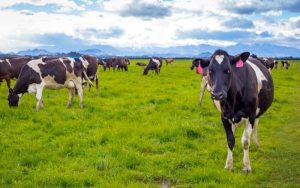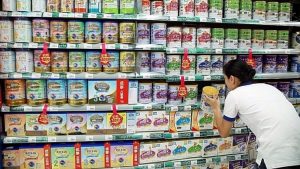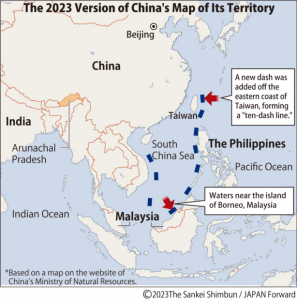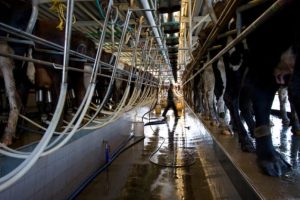
The live export sector – focusing on dairy heifers to China – has been a lucrative market for New Zealand farmers across much of the last decade, offering significant trade opportunities and attractive prices for dairy cattle.
But with a government ban on live animal exports in place since last year, and Chinese demand for dairy heifers waning, the future prospects for the sector are far less certain, according to a new industry report by agribusiness banking specialist Rabobank.
In its just-released report, New directions for Oceania live dairy cattle exports in a slower market, Rabobank says New Zealand enjoyed the advantages of the Chinese live export market for much of the past decade.
“However, this came to an end in April 2023 when the New Zealand government enacted a ban on all live exports by sea, including dairy cows,” report author, RaboResearch senior dairy analyst Michael Harvey said.
“Recently, a change of government has prompted discussions of a possible shift in policy. Potential changes surrounding a restart in live exports via sea could include “gold standard” rules for animal welfare, along with purpose-built ships.”
Mr Harvey said public consultation on the possible reinstatement of livestock export by sea is likely to kick off by the end of 2024.
“The topic has historically been divisive among the farming community, so uncertainty prevails in the short-term as to whether trade will be reinstated.”
Mr Harvey said the broader policy environment around live exports in Australia – New Zealand’s main source of competition for live exports prior to the ban – was also far from clear.
“While there has been no shift in policy on the live exports of dairy cattle, in May 2024, the federal government announced that the export of live sheep by sea from Australia will end on 1 May 2028,” he said.
Slowdown in Chinese demand
Should New Zealand trade of live animal exports be reinstated at some stage in the future, Mr Harvey said, Kiwi exporters would likely encounter a markedly slower market.
“Oceania live dairy cattle trade volumes peaked at 233,000 head in 2022, with a combined total of 815,000 dairy cows exported from Australia and New Zealand between 2018-2023.” he said.
“However, by mid-2024, the flow of dairy heifers from Australia and New Zealand to China has slowed to barely a trickle. The slowdown began in 2023, due to a combination of New
Zealand’s ban on exports along with a slowdown in Chinese demand, resulting in an annual decline of 83 per cent.”
“Unsurprisingly, the drop in trade with China has taken a heavy toll on indicative pricing in the market for live dairy cattle exports. Based on RaboResearch analysis of Australian export data, the indicative Australian export FOB price per dairy cow peaked at USD 3,000 in 2022 but fell to USD 1,500 per head in 2023.”
Mr Harvey said the growth journey of China’s milk supply – a key driver of increased heifer exports – is at a critical juncture.
“The industry is grappling with an oversupply of raw milk, leading to falling local milk prices and lower farm profitability,” he said.
“Moving forward, a recovery in Chinese heifer demand is possible. However, it will require a combination of improved milk prices, increased farm profitability, and further government policy to support farm expansion and herd rebuilding.
“Bearish farm sector fundamentals in China, a market that is irreplaceable, point to slower live export trade for the foreseeable future.”
Other export markets
The Rabobank report said collectively, the Southeast Asian markets – including Singapore, Malaysia, Thailand, Indonesia, Vietnam, and the Philippines – are a large milk-deficit region, with self-sufficiency rates ranging from one per cent to 50 per cent.
Based on RaboResearch modelling, the combined import deficit totaled more than 10 billion litres of liquid milk equivalent in 2023.
“More recently,” Mr Harvey said, “there has been a renewed focus on local herd expansion and milk supply growth – through private and public investment – across some Southeast Asian economies to specifically address supply chain and milk price risks.
“This initiative secures a small but steady flow of live dairy heifer exports into the region.
“Reduced demand from China provides a more attractive opportunity for buyers in Southeast Asia, which might lead to an increase in trade moving forward,” he said.
However, Mr Harvey said as history shows, the Southeast Asian region cannot replace China in volume terms, with annual volumes never surpassing 25,000 cows.
“In fact, during the recent cycle between 2018-2023, China consistently accounted for over 80 per cent of all heifer export numbers from Australia and New Zealand. So, the hunt may well be on for new and emerging market opportunities.”
Rabobank New Zealand Limited is a part of the global Rabobank Group, the world’s leading specialist in food and agribusiness banking. Rabobank has more than 125 years’ experience providing customized banking and finance solutions to businesses involved in all aspects of food and agribusiness. Rabobank is structured as a cooperative and operates in 38 countries, servicing the needs of about nine million clients worldwide through a network of close to 1000 offices and branches. Rabobank New Zealand is one of the country’s leading agricultural lenders and a significant provider of business and corporate banking and financial services to the New Zealand food and agribusiness sector. The bank has 27 offices throughout New Zealand.
You can now read the most important #news on #eDairyNews #Whatsapp channels!!!
🇺🇸 eDairy News INGLÊS: https://whatsapp.com/channel/0029VaKsjzGDTkJyIN6hcP1K





